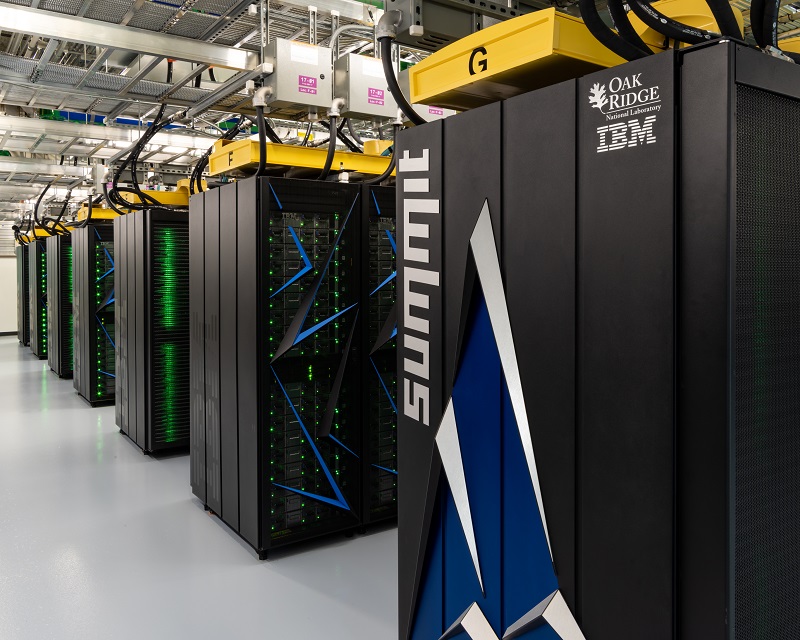China has embarked on a $145 million (~ ¥1 billion) effort to build a superconducting computer with plans for a prototype to be up and running as early as 2022, according a recent article in the South China Morning Post.
“Chinese scientists have already made a number of breakthroughs in applying superconducting technology to computers. They have developed new integrated circuits with superconducting material in labs and tested an industrial process that would enable the production of relatively low cost, sophisticated superconducting chips at mass scale. They have also nearly finished designing the architecture for the computer’s systems,” according to the report, written by Stephen Chen.

Multiple media outlets picked up the article. Chen reports the program was “quietly launched” by the Chinese Academy of Sciences (CAS) in November last year. A superconducting-based computer, of course, would consume far less power and potentially operate at higher frequencies. The power wall is a challenge faced by all supercomputers. Exascale computing projects worldwide are struggling for ways to reduce power consumption. The Department of Energy has set a target of ~40 megawatts for U.S. exascale machines but many believe that is unrealistic. By comparison pre-exascale Summit (U.S.) and Sunway TaihuLight (China) – the top two machines on the current Top500 list – have budgets well under 20MW.
Hyperion Research analyst Bob Sorensen noted, “This is an interesting development. The promise of superconducting components – specifically high-speed and low power – has been around for decades, but high cost and complex technical issue have prevented the development of any serious systems to date. However, the time may be right for this technology to come to the fore due to a confluence of events:
- The slowdown in performance gains in traditional ‘room-temperature’ silicon.
- The growing interest in new exotic technologies and material research to support a ‘Post Moore’s law’ hardware base
- The profusion of superconducting quantum computing efforts that have extended the state of the art in cooling technology that can be applied to superconducting silicon schemes.”
Few details of the China project were presented in the SCMP article. CAS president Bai Chunli is quoted saying the technology could help China challenge the US’ dominance of computers and chips as seen in this excerpt:
“The integrated circuit industry is the core of the information technology industry … that supports economic and social development and safeguards national security,” Bai said in May during a visit to the Shanghai Institute of Microsystem and Information Technology, a major facility for developing superconducting computers…“Superconducting digital circuits and superconducting computers … will help China cut corners and overtake [other countries] in integrated circuit technology,” he was quoted as saying on the institute’s website.

Sorensen also struck a cautionary note, “Although it is too early to tell if this, or any other on-going, superconducting supercomputer research effort will bear fruit in the next five years or so, it is clear that China is looking to expands its advanced computing research efforts across a broad front that includes quantum computing, traditional silicon-based HPCs, and now superconducting systems, and they appear to have a sufficient level of funding to seriously address this multifaceted, technically-demanding, but promising technology for next generation computing.
“Demonstrated success by the Chinese to build a workable superconducting supercomputer ahead of US or other national efforts could give the Chinese a significant lead in the development of high-end HPCs writ large in the next decade. Unlike quantum computers, which require a complete new algorithmic and application paradigm, superconducting supercomputers will be able to use the same wide base of existing algorithms and applications as traditional HPCs, many that support important national security missions.”
The new China machine will indeed rely on “classical structure” and not upon more distant technologies such as quantum computing and neuromorphic computing according Li Xiaowei, executive deputy director of the State Key Laboratory of Computer Architecture, cited in the article.
Chen also reported that Fan Zhongchao, researcher with CAS’s Institute of Semiconductors who reviewed the contract as part of an expert panel, said the hardware was a field-programmable gate array (FPGA), a reconfigurable chip that could be used to simulate and test the design of a large-scale, sophisticated integrated circuit. “The overall design [of the FPGA testing phase] is close to complete,” he is quoted as saying.
If China’s efforts are successful, wrote Chen, the “Chinese military would be able to accelerate research and development for new thermonuclear weapons, stealth jets and next-generation submarines with central processing units running at the frequency of 770 gigahertz or higher. By contrast, the existing fastest commercial processor runs at just 5Ghz.”
Link to South China Morning Post article: https://www.scmp.com/news/china/society/article/2161390/can-china-build-us145-million-superconducting-computer-will




























































